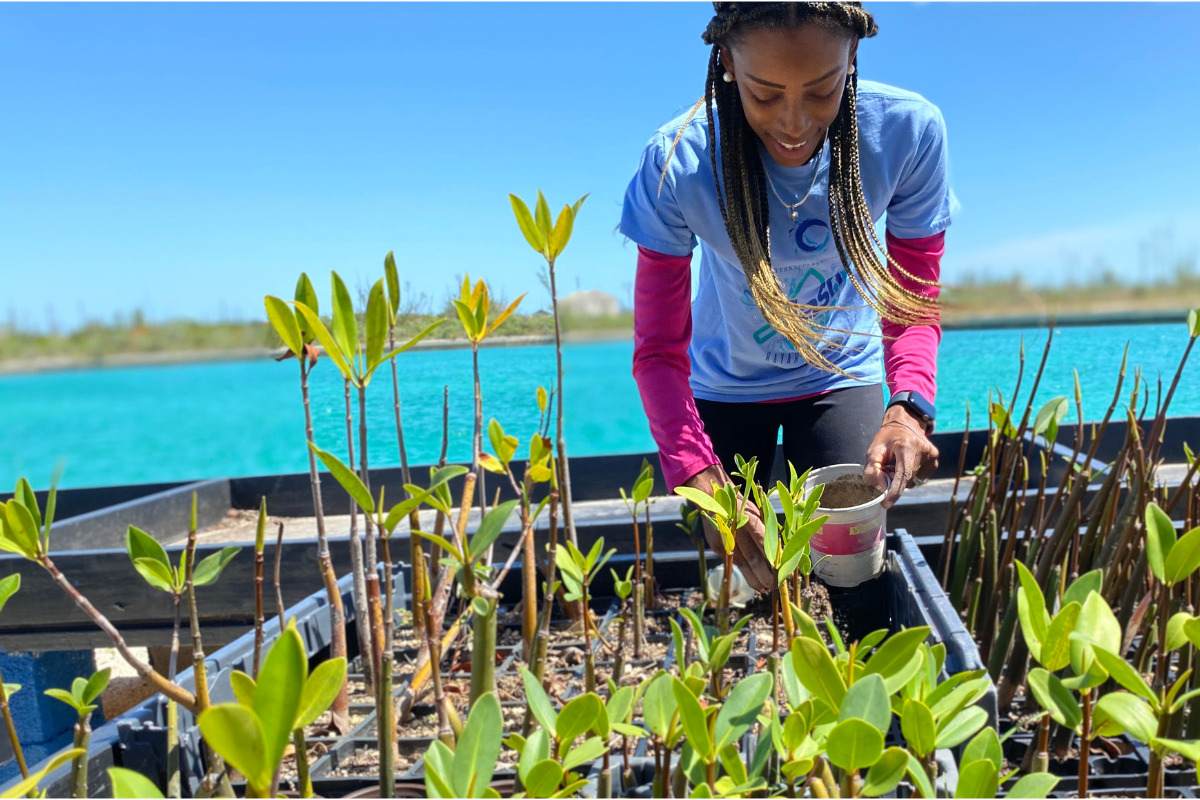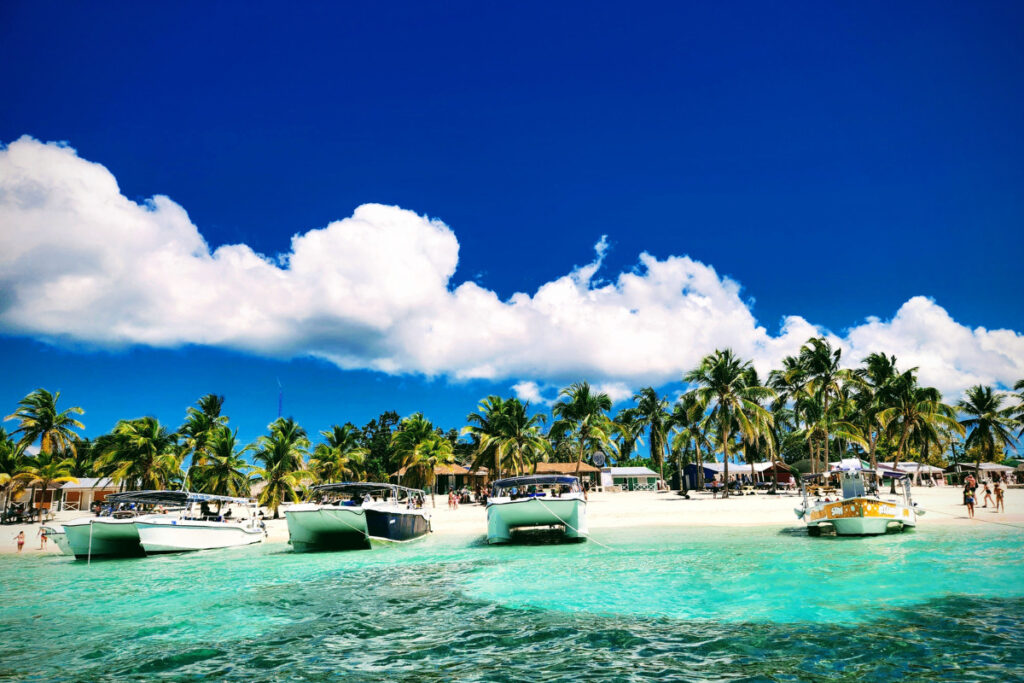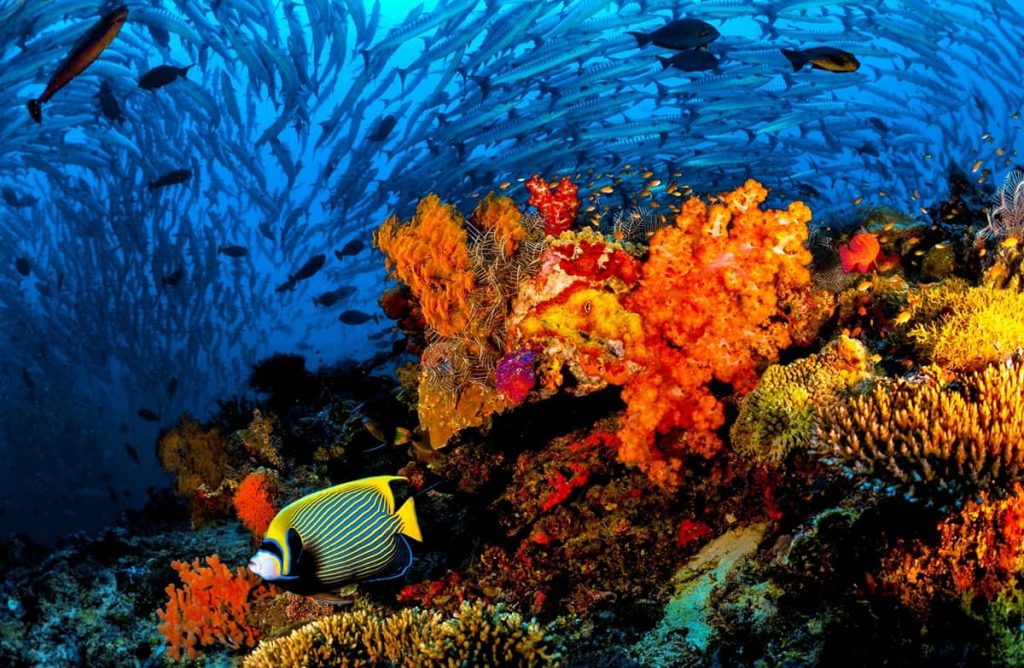The devastation left behind by Hurricane Dorian on September 1st, 2019 left many communities in Abaco and Grand Bahama vulnerable. This category 5 hurricane destroyed residential areas, left thousands both jobless and homeless, and led to a death toll of 74 persons. It also diminished the islands’ coastal ecosystems, particularly its mangrove forests. During this natural disaster, nearly 73% of all mangroves in Grand Bahama and 40% of the mangroves in nearby Abaco were lost. After experiencing winds of 185 mph and catastrophic storm surges for three consecutive days, access to safe drinkable water, food, fuel, and even entrance into the island was made even more difficult. Although efforts to provide relief began very soon after for these urgent needs, the economic fallout for the industries depending on the land for their income would prove to be the next major concern. The livelihoods of many Bahamians, particularly those already part of vulnerable communities, are connected to the land— the coastal zones supply an environment for commercial fishing as well as tourism.
In The Bahamas, various ecosystems such as forests, inland waters, wetlands, coral reefs, shoreline and coastal environments, and agricultural landscapes have a wide variety of plants, animals, and microorganisms.
In The Bahamas, various ecosystems such as forests, inland waters, wetlands, coral reefs, shoreline and coastal environments, and agricultural landscapes have a wide variety of plants, animals, and microorganisms. Prior to this hurricane, the Bahamas was considered a “hotspot”, rich in biodiversity, and considering the destruction it left behind, unfortunately, much of that space required long-term recovery plans. Resultantly, organizations whose objectives encompassed the protection of the environment within the Caribbean responded to this destruction through its recovery grant system. Two such organizations were the Caribbean Biodiversity Fund (CBF) and the Bahamas Protected Areas Fund (BPAF). With funding from the German Development Bank (KfW) and the CBF Endowment Fund, a total of USD 1.26 million was made available for The Bahamas Hurricane Dorian Recovery Grant Agreement between the CBF and BPAF. CBF channeled the funding to BPAF, who in turn led the special call for proposals in the Bahamas. Accordingly, the proposals accepted were for ecosystem impact assessments, ecosystem-based recovery efforts (including protected areas infrastructure), the provision of water purification systems, and renewable energy initiatives, in or around Abaco and Grand Bahama. One of the many notable concepts accepted was that of the Waterkeepers Bahamas.

Mangrove Mania: Phase 1
The Waterkeepers Bahamas project began as an initiative supporting the belief that the local community would play a key role as a resource and constituency for environmental problem-solving. The project was sponsored by the BPAF’s and was rolled out in phases once the groundwork was laid. The initial event on May 14th, 2022 was a competition that included a cash prize to be awarded at the end of that year. The Competition tasked community members to safely collect mangroves from local beaches or mangrove locations designated by the project partners. Teams were responsible for mangrove plants in accordance with Waterkeepers Bahamas in order to ensure their survival. The organization’s goal was to have 30,000 mangrove propagules replanted and growing by the end of 2022. With the assistance of mangrove restoration experts, participants were trained and able to safely extract the mangroves from the beaches and transport them to the nurseries. This competition jump-started the replanting of the previously destroyed mangrove areas.
As the project proceeded, BPAF and Waterkeepers Bahamas garnered the attention of many local newspapers as well as government officials, and the publicity gained from this recognition ultimately elevated the scale of the project. To the delight of everyone, the outcomes of this competition exceeded expectations, surpassing the 30,000 mangrove target in the nursery by October 2022. A local secondary School took home the grand prize of $2000 for collecting the most healthy red mangrove seeds. The result of embracing the help from the community was an equally impressive turnout in the end-of-year Mangrove Harvesting and Replanting Project, where 10,000 mangrove seedlings were planted in one day bringing the mangrove population in the nursery up to 32,990.
Upon completion of the out planting of these nursery propagules, phase two began at the start of 2023 These next steps consist of monitoring the planting of the propagules and harvesting later on. Typically Waterkeepers Bahamas , solely focus on clean water, holding polluters accountable to preserve and protect water. In their daily battle, they fight against polluters who poison Bahamian waterways, such as oil tankers or power company discharges, and developers who demolish mangrove forests. The Bahamas is a flat and low-lying nation considered an archipelago made up of 700 coral islands, and one of the primary benefits of mangroves is that they serve as a coastline stabilizer, helping to create new land. Furthermore, Mangroves protect coastal communities from flooding and storm surges. For these reasons and more, Mangrove restoration is essential. The restoration work being done by the Waterkeepers Bahamas, supported by the BPAF, is a crucial step towards jumpstarting the recovery of the mangrove forest in the northern Bahamas.
Why Was Mangrove Mania Successful?
The Waterkeepers Bahamas took some key actions to secure the safety and quantity of these mangrove seeds and propagules.
The competition was a key success factor as it motivated the community to collaborate and collect a significant number of local mangrove propagules for future planting and restoration initiatives. It also served to raise awareness of the precarious state of the island’s mangrove forests and the severe threats that would emerge if restoration efforts were unsuccessful.
The project also flourished from the beginning due to the rigorous assessments of teams during the competition, with guidance provided on managing seedlings for optimal survival rates. This action truly empowered the community participants as it made the project more accessible while imparting invaluable knowledge to them. Participants were trained on the safe collection of mangrove propagules from local beaches and designated mangrove areas, ensuring that everyone was well-versed in the collection process.
Lastly, the project’s success is attributed to its focus on building skills and capacity through community support and participation. Its aim was to transform the state of the forest in Dover Sound, Bahamas, providing opportunities for fisheries to thrive, and strengthening natural defense barriers. Furthermore, the project supported the development of a workforce that complemented and contributed to restoration projects. Since the Dover Sound, Bahamas area has been in dire need of rehabilitation, and communities have been at risk due to environmental deterioration and climate change, the project partners remain committed to raising awareness among community stakeholders on how they can all participate in this initiative.

The results so far have been astounding, the Waterkeepers Bahamas, their partners, and a dedicated team of volunteers, the project has yielded remarkable results. To date, over 30,000 mangrove propagules have been harvested and more than 15,000 red mangrove seedlings have been planted across almost 7 acres of land. Approximately 200 mangroves have been geotagged to monitor their survival rates, track their leaf count, and stem height, and identify any potential damage or disease. The project’s primary objective has been to build community support and participation while positively transforming the current state of the forest in Dover Sound, Bahamas. The Waterkeepers Bahamas team, with the support of the BPAF and other sponsors, aims to revive the area’s fisheries, enhance natural defense barriers, and foster the development of a skilled workforce that can contribute to future restoration projects.
Waterkeepers Bahamas
Waterkeepers Bahamas is a Bahamas-registered Non-Profit Organization focused on community-based initiatives to ensure the waters of the Bahamas are safe for swimming, fishing and drinking for future generations. It is an accredited member of the Waterkeeper® Alliance, the largest and fastest-growing global nonprofit focused on clean water. Its network of more than 300 organizations and affiliates in over 45 countries is on the frontlines of the global water crisis, patrolling and protecting more than 2.6 million square miles of rivers, lakes and coastal waterways on six continents.
Bahamas Protected Area Fund
The Bahamas Protected Area Fund (BPAF) is a national conservation trust fund devoted to helping ensure that Bahamian marine parks will have a dedicated, sustainable source of revenue to employ staff, galvanize local community support, purchase equipment, build visitor facilities and monitor ecosystem health. The BPAF has been a National Conservation Trust Fund partner with the CBF from November 2020. To date, BPAF has financed 21 projects in areas related to marine restoration and conservation, including mangrove and coral reef
restoration; building climate resilience; energy resilience through solar installation and supporting projects that restore ecosystem health and resilience at local sites. Twenty of the projects have been designed to promote conservation and recovery activities such as mangrove and coral reef restoration after the passage of Hurricane Dorian. As at 31 Dec 2022, the CBF has disbursed USD 1,209,696 to the Bahamas Protected Area Fund in support of its mission to conserve the Bahamian marine parks.
Caribbean Biodiversity Fund
The Caribbean Biodiversity Fund was established in 2012 to create reliable, long-term funding for conservation and sustainable development in the Caribbean region. The CBF has been providing sustainable financing mechanisms for the protection and conservation of the Caribbean’s biodiversity and natural resources for the past decade and to date, has disbursed a grant amount of US$ 20 million to National Conservation Trust Funds, various NGOs, research institutes and governments for the conservation of the Caribbean biodiversity in a total of 11 countries, with topics ranging from mangrove and coral restoration to protected area management and livelihood generation.
The Caribbean Biodiversity Fund (CBF) is a regional umbrella environmental fund that uses a flexible structure to implement innovative solutions and consolidate resource mobilization in the Caribbean through a range of financial instruments. The CBF has received financial support from mainly the German Government, specifically the Federal Ministry of Economic Cooperation and Development (BMZ) and the Federal Ministry of Environment (BMU), both through the German Development Bank KfW and the IKI International Climate Initiative, as well as The Nature Conservancy (TNC). Other donors would include the GEF, World Bank, UNDP, French Agency for Development (AFD), the French Facility for Global Environment (FFEM) and Global Affairs Canada.
Currently, the CBF has 3 programs, the Conservation Finance Program, the Climate Change Program, focused on Ecosystem-based Adaptation (EbA) strategies, and the Nature-based Economies Program with an Advancing Circular Economy focus.






